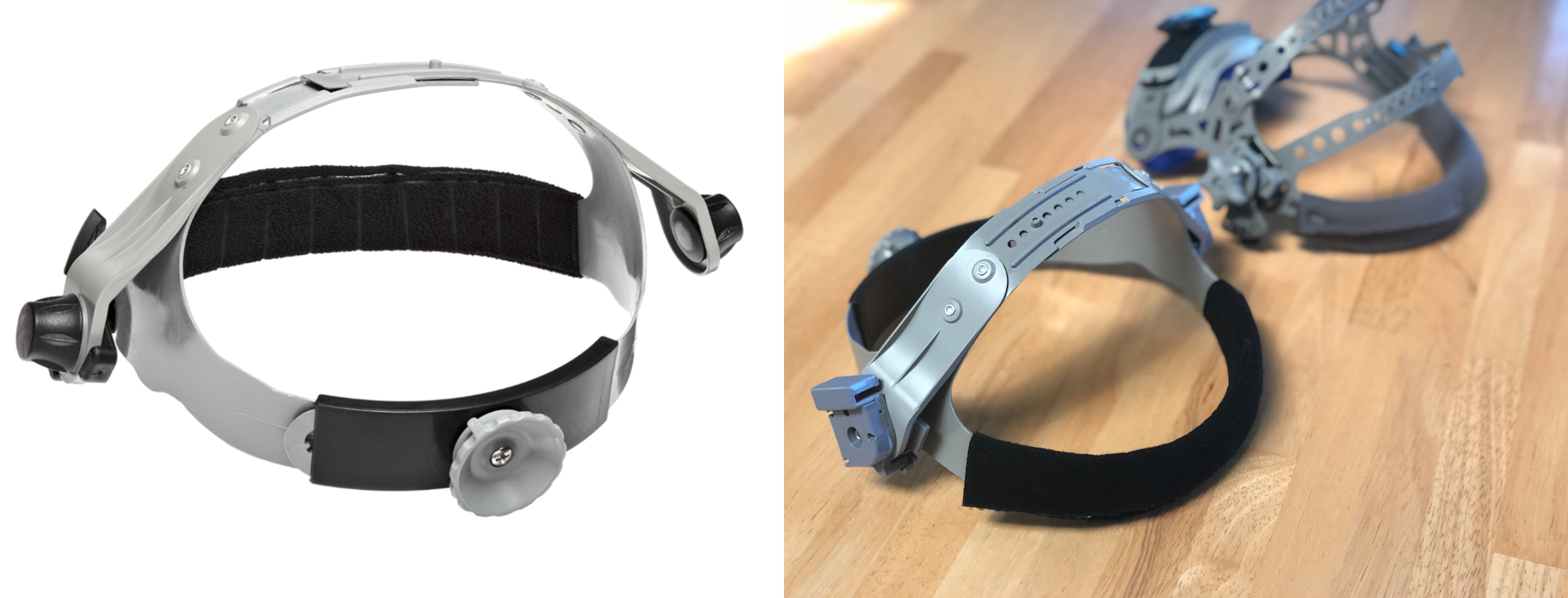This morning, we released an update to the North Star headset assembly. The project CAD files now fit the Leap Motion Controller and add support for alternate headgear and torsion spring hinges.
With these incremental additions, we want to broaden the ability to put together a North Star headset of your own. These are still works in progress as we grow more confident with what works and what doesn’t in augmented reality – both in terms of industrial design and core user experience.

Leap Motion Controller Support

If you’re reading this, odds are good that you already own a Leap Motion Controller. (If you don’t, it’s available today on our web store.) Featuring the speed and responsiveness of our V4 hand tracking, its 135° field of view extends beyond the North Star headset’s reflectors. The device can be easily taken in and out of the headset for rapid prototyping across a range of projects.
This alternate 3D printed bracket is a drop-in replacement for Project North Star. Since parts had to move to fit the Leap Motion Controller at the same origin point, we took the opportunity to cover the display driver board and thicken certain areas. Overall these updates make the assembly stiffer and more rugged to handle.
Alternate Headgear Option

When we first started developing North Star prototypes, we used 3M’s Speedglas Utility headgear. At the time, the optics would bounce around, causing the reflected image to shake wildly as we moved our heads. We minimized this by switching to the stiffer Miller headgear and continued other improvements for several months.
However, the 3M headgear was sorely missed, as it was simple to put on and less intimidating for demos. Since then we added cheek alignment features, which solved the image bounce. As a result we’ve brought back the earlier design as a supplement to the release headgear. The headgear and optics are interchangeable – only the hinges need to match the headgear. Hopefully this enables more choices in building North Star prototypes.
Torsion Spring Hinges

One of the best features of the old headgear was torsion hinges, which we’ve introduced with the latest release. Torsion hinges lighten the clamping load needed to keep the optics from pressing on users’ faces. (Think of a heavy VR HMD – the weight resting on the nose becomes uncomfortable quickly.)
Two torsion springs constantly apply twisting force on the aluminum legs, fighting gravity acting on the optics. The end result is the user can acutely suspend the optics above the nose, and even completely flip up the optics with little effort. After dusting off the original hinge prototypes, rotation limits and other simple modifications were made (e.g. using the same screws as the rest of the assembly). Check out the build guide for details.
We can’t wait to share more of our progress in the upcoming weeks – gathering feedback, making improvements, and seeing what you’ve been doing with Leap Motion and AR. The community’s progress so far has been inspirational. Given the barriers to producing reflectors, we’re currently exploring automating the calibration process as well as a few DIY low-cost reflector options.

You can catch up on the updated parts on the Project North Star documentation page, and print the latest files from our GitHub project. Come back soon for the latest updates!

